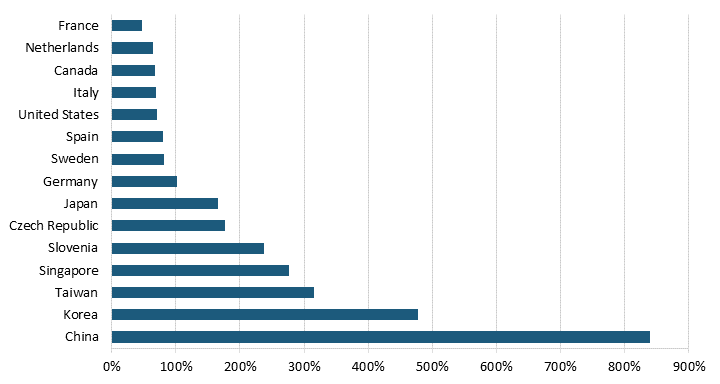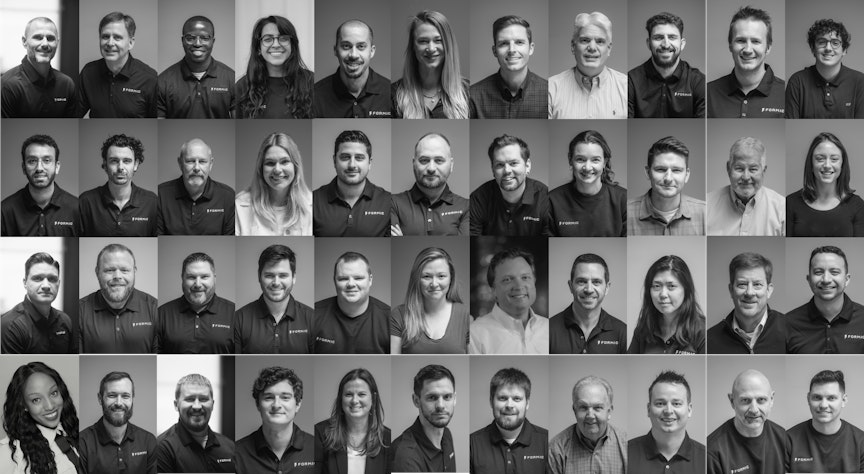Robots are everywhere. Tesla is touting its humanoid robot coined Optimus, Chipotle has deployed Chippy to make tortilla chips, and startup Perceptive completed its first fully automated dental procedure using an AI-powered robot this year. These are just a few examples of companies using robotic automation to boost productivity.
As robots become increasingly commonplace across industry, many believe automation eliminates human jobs. But the data tells a different story.
How Robots Are Transforming Production Jobs
The labor market's impact on technology is often only viewed through two lenses: job creation or elimination. But those aren’t the only options, there’s also job transformation.
For example, many companies now employ welding robots because the needed labor to keep up with demand isn’t available. This makes the welders that companies do have that much more vital to production, as they become the robot operators ensuring production demands are met by eliminating downtime and boosting efficiency.
Alongside these new job titles can also come rising wages, as specialized skills are harder to obtain. According to “A Blueprint for the Future of Manufacturing in Northeast Ohio,” smart manufacturing positions pay an average of $12,000 more a year than traditional manufacturing jobs.
Technology is creating new jobs in this very way, and the World Economic Forum estimates that by next year, technology will create at least 12 million more jobs than it takes.
Automation has been proven to increase productivity and improve efficiency, especially when managing manual tasks that are labor-intensive and prone to injuries. For example, one of Formic’s customers, Mi Rancho, eliminated safety risks with end-of-line stacking, repurposed their team to other value-added jobs, and eliminated potential injuries that would result in downtime.
Out of All Deployments, Only 1 Reduced Headcount
According to the U.S. Census Bureau companies that implement automation technologies are “more likely to report that they resulted in increased employment.” In fact, the report found that technology use is more connected to changes in skill requirements than employment.
Of Formic’s robotic automation deployments so far, just 1 company reported a reduction in headcount. In every other instance, Formic has trained the employees to be robot operators. About 80% of the time, the people who were previously packing and stacking cases on the line are the ones who are upskilled to run the equipment moving forward. This means the business retains that hard-to-find labor with valuable institutional knowledge, while also getting the work done more quickly and safely.
“By installing the latest automated equipment, we can produce more and transition repetitive jobs to roles like machine operators and mixers,” said Joe Santana, Mi Rancho’s Senior Director of Operations. “It's not about reducing positions; it's about becoming more efficient and competitive."
1.5 Million Open Roles in Manufacturing
There are currently 1.5 million unfilled positions in manufacturing, with around 10,000 more people retiring every day. On top of this, consumer demand is greater than ever and many businesses are struggling to keep up.
Robotic automation is a solution for closing this gap, but it traditionally required a large upfront investment and significant on-site support — from engineering to maintenance to software — that is currently inaccessible for most plants on their own.
This risk and complexity of automating for the first time has bottlenecked much-needed adoption, as companies continue to report challenges with labor gaps. In our 2024 “Formic State of U.S. Manufacturing Report,” respondents' most common factors affecting business included labor shortages and rising labor costs.
Formic is closing this accessibility gap by eliminating the traditional financial and operational barriers to automation adoption and continuous success. Our Full Service Palletizer Rentals program includes four different fully supported turnkey palletizing systems (and growing!) — from cobot to industrial — all for one all-inclusive fixed monthly rate. Manufacturers can swap equipment to deliver the new throughput required as demands on productivity increase and keep the same fixed price, keeping financial projects easy and constant.
“What attracted me to Formic was the low risk,” said Rich Moldovan, Compact Industries’ Engineering Manager. “With big decisions like this, you're putting your reputation on the line, but I felt very confident with Formic. The whole process was so seamless, and this quality of service didn’t happen when we tried to automate on our own.”
Instead of replacing human jobs, robots are filling in the gaps creating a production bottleneck. With repetitive tasks taken care of, human employees can upskill, and Formic doesn’t put the onus on managers to train employees on robotic systems — operator training is included in our Full Service Palletizer Rentals, which drives employee retention and skill growth.
The Future Scope of Robotic Automation
In the U.S., only 1 out of 10 manufacturers are using automation in some way, with the U.S. at just 70% of expected robot adoption given its manufacturing wages.

Image Credit: Information Technology & Innovation Foundation
Looking ahead, automation will no doubt continue to make waves in industry worldwide, and the U.S. must keep pace. According to Brookings, unlocking automation is a key part of improving the manufacturing environment in the U.S. as a whole.
Automation isn’t replacing jobs, it’s transforming them into something more and we’re seeing that firsthand at Formic every day.


